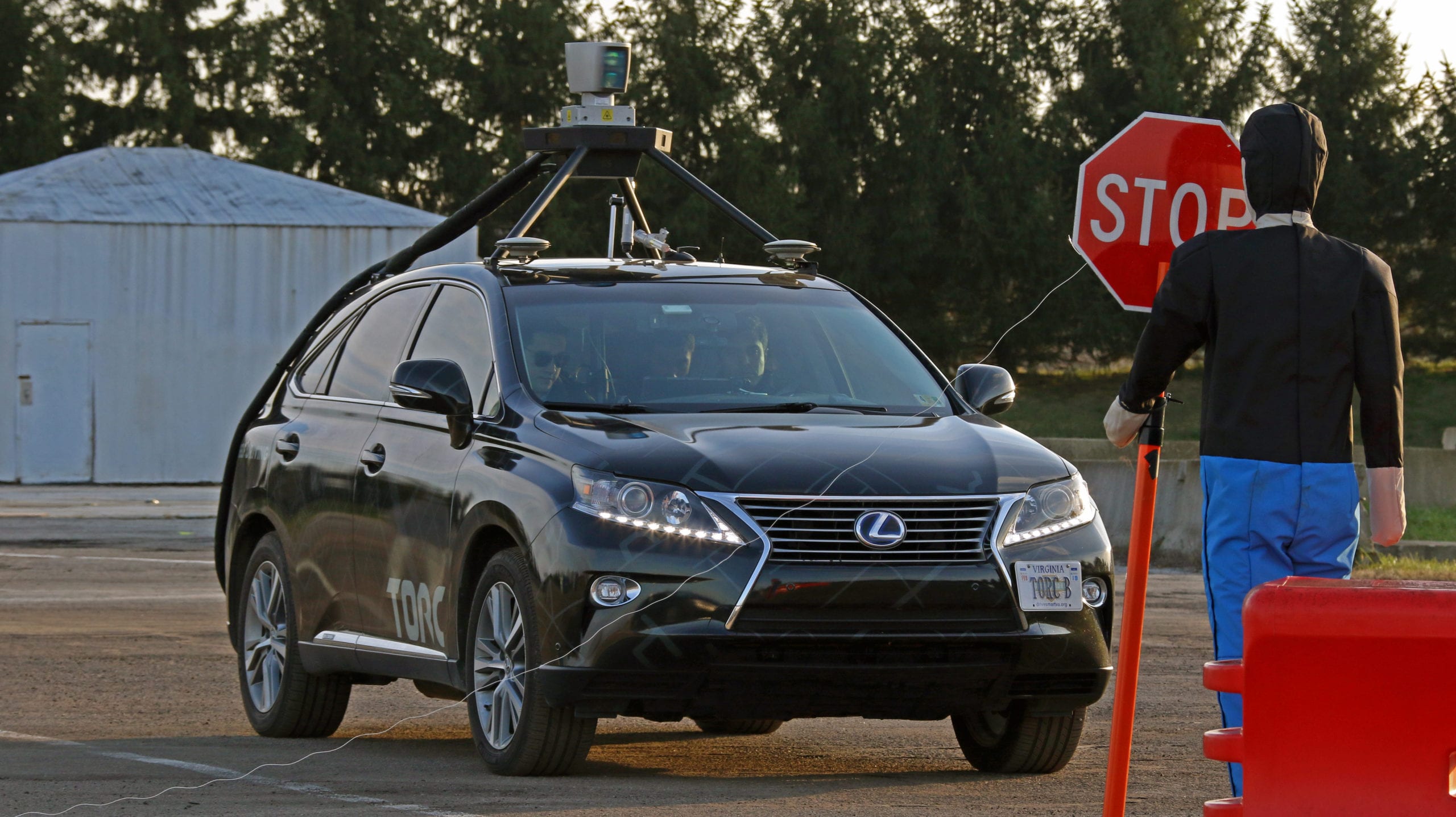BLACKSBURG, Virginia – Torc Robotics, a company that makes technology for self-driving cars, said today that it is making a complete self-driving car system for consumer cars. Using Torc’s end-to-end software stack and a decade of experience in multiple industries, self-driving technology lets cars make hard decisions.
Developing a Fully Autonomous Self-Driving Car Solution
“We’re offering automotive companies a fully autonomous self-driving solution that can be implemented in real consumer cars,” Torc co-founder and CEO Michael Fleming said. “We’ll also collaborate with them to integrate the technology into existing systems.”
Fleming emphasized Torc’s status as a Level 4 company, referring to the SAE levels of automated driving. All efforts and testing are aimed at refining this level of high automation, in which human drivers and intervention are not required when the vehicle operates in specified driving situations.
A Leader in Autonomous Vehicles
Torc first established itself as a leader in automotive autonomy in 2007, when its vehicle finished third in the Defense Advanced Research Projects Agency (DARPA) Urban Challenge. While many members of the winning teams joined Google’s autonomous driving project, Torc retained much of its talent.
Since then, the Torc team has expanded significantly and has continued to develop the technology, which has been applied to a wide range of commercial ground vehicles, from large mining trucks to military vehicles.
“We are passionate about autonomous technology and believe it will help make our world safer and more sustainable,” Fleming said. “We’ve been working on our technology for more than ten years, and we’re thrilled that the auto industry is finally ready for self-driving cars.” Torc has the engineering expertise and proven technology to make self-driving cars a reality.”
The company used its technology in two Lexus RX vehicles. Since February 2017, the cars have been operating on public roads in various weather conditions following extensive testing. Torc’s own solutions for localization, real-time navigation, mapping, and obstacle detection and tracking are all included in the system.
In April, one of the vehicles demonstrated a long-distance drive, traveling more than 1,000 miles autonomously from Torc’s headquarters in Blacksburg, Virginia, to the Ford Piquette Avenue Plant in Detroit, the birthplace of the Model T.
“The automotive industry is challenged with determining what claims are hype versus what will create real value for car manufacturers and their customers,” Fleming said. “We have proven technology and offer it through a partnership model.” Collaboration is critical for success in the transportation revolution.”
According to Torc Chief Technology Officer Ben Hastings, the Torc team’s advantage is its proven ability to tackle the multidisciplinary systems engineering effort required to develop fully self-driving cars.
“While many startups have interesting pieces of technology, we have a decade of experience delivering an end-to-end solution that actually works.” This includes multimodal sensor fusion (vision, radar, and LiDAR) and the use of both traditional autonomy algorithms and newer machine learning techniques,” Hastings explained.
Torc intends to continue refining its technology throughout the year through continuous testing and development. Fleming expressed optimism about the project’s future progress.
“I’m excited about this year,” he said. “We will have some major announcements to make to the public.”
Torc Robotics
Torc Robotics, based in Blacksburg, Virginia, provides unmanned and autonomous vehicle solutions for various industries, including defense, agriculture, automotive, and mining. Torc, founded in 2005, has integrated its components and systems on ground vehicles ranging from two-ton SUVs to 300-ton mining trucks—all in safety-critical environments. Torc first gained attention when its car was named one of the 2007 DARPA Urban Challenge winners. In 2011, the company made history by co-developing a car with Virginia Tech that allowed a blind person to drive independently on the Daytona International Speedway as part of the National Institute of the Blind’s Blind Driver Challenge.

